Dark brown Learn more about Dark brown
-
Where is the dark brown soil distributed in China? What is suitable for growing?

Dark brown soil is a zonal soil developed under temperate humid monsoon climate and coniferous and broad-leaved mixed forest. it is an independent soil classified by brown forest soil after the founding of the people's Republic of China. The total K content is 15.7-19.3, the profile configuration is O-AB-Bt-C, the surface humus accumulates, and the whole profile shows
2020-11-09 Dark brown soil distribution in our country which areas are suitable for planting -
Control methods of leaf roll moth

Control methods of leaf roll moth
2018-08-09 -
Clove brown spot

Symptoms and pathological changes: mainly formed brown spots on the leaves, disease spots round, nearly round or irregular, dark brown edge, light brown center, severe brown spots, early defoliation, leaving only a small number of leaves in the whole plant. The pathogen is fungus, Cercospora lilac, the seed is spherical, dark brown, the conidium is fascicled and erect.
2018-12-16 -
How is eggplant stem and leaf long spot to return a responsibility after all?
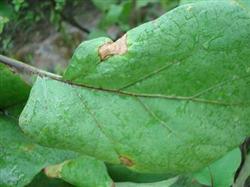
The small spots on eggplant leaves are light in the middle and dark brown on the edges, and the larger ones are irregular. There are also many small black spots on the disease spot. Many petioles have dark brown necrotic spots. After the stem disease, also has the dark brown disease spot, the disease spot is also the edge dark brown, the middle color is lighter, above also dense small black spot.
2018-09-11 -
Soybean bacterial spot disease

Symptoms: damage to seedlings, leaves, petioles, stems and pods. The cotyledons of the seedlings were infected with semicircular or subcircular brown spots. Leaves infected with primary chlorosis irregular small spots, water stains, expanded polygonal or irregular shape, the size of about 3-4mm, dark brown to dark brown in the middle of the disease spot, with a narrow halo ring on the periphery, and the disease spot fused into dead patches. The stem was dark brown water-stained strip at the beginning of the disease, irregular after expansion, slightly sunken. Dark brown strips infected with pods and beans
2019-01-16 -
Control of Violet bacterial Rot

Symptom-nbsp; shape: the disease occurs at seedling stage and adult plant. When the seedlings fell ill, the main stem of the disease showed water-stained dark green soft rot, and then turned dark brown. The disease occurs in the adult stage, and the disease spot appears in the stem near the ground. The disease spot is irregular or surrounds the stem, dark brown, slightly sunken and cracking, resulting in plant death and pus in the disease.
2018-12-19 -
Characteristics of beet armyworm: what are the larvae and adults of Spodoptera exigua
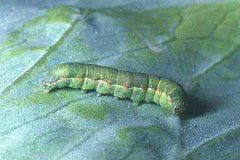
Beet armyworm is a pest, we know it, but do you know its ecological habits and morphology? Let's take a look. Ecological habits: the adults of beet armyworm lie dormant during the day and go out at night, live on the back of leaves or in the dark during the day, and begin to move and mate after sunset.
2019-01-20 Beet nocturnal moth characteristic larva and adult what kind of -
What are the characteristics of Robinia pseudoacacia?

Black locust diamondback moth, also known as bean diamondback moth. It is mainly harmful to Robinia pseudoacacia, soybeans, vines and so on. The larvae feed on the leaves, and in serious cases, the leaves can be eaten up. The adult worm has a body length of 40mm to 50mm, a wingspan of 100mm to 120mm, yellow-brown body wings, dark purple of the head and forechest dorsal plate, a pale white semicircular spot near the center of the forewing, six wavy stripes on the wing surface, and a dark brown twill on the top of the wing to divide the top angle into two parts; the rear wing is dark brown and dark brown in the middle. Egg, oval, yellow and white. Larva, the last instar is about 80 mm.
2019-01-15 -
Jinding duck

Originated in Longhai, Tongan, Nanan, Jinjiang and other counties and cities in Fujian Province, it is one of the high-yield breeds of egg duck in China. Jinding duck has a long body, with red-brown forebody, gray-brown back, dark markings on the belly, dark brown wing feathers and dark brown tail feathers. The mother duck has a thin and compact body and a plump belly. The whole body feathers are reddish brown sparrow feathers and mirror feathers. Beak yellowish green, shank web orange, iridescent brown. The adult male duck weighs 1.76 kg. The mother duck weighs 1.78 kilograms. The female duck begins to lay at 120 days old and lays 280 eggs a year.
2019-01-16 -
Rice white-backed planthopper

Host rice, English white, corn, barley, wheat, sugarcane, sorghum, barnyard grass, Kentucky bluegrass and so on. The damage characteristics are the same as those of brown planthopper. Morphological characteristics the long-winged male is 3. 2-3.8mm long, light yellow with black and brown spots. Protrusion of the top of the head, forechest, middle chest dorsal plate lateral ridge external compound eye with 1 crescent dark brown spot, middle chest dorsal plate side area dark brown, middle yellow longitudinal band, front wing translucent, end brown halo spot; wing disease, face, chest, abdomen ventral dark brown. The long-winged female has a body length of 4mur4.
2019-01-16 -
Selection method of laying duck breed

Selection method of laying duck breed
2018-07-04 -
Saddle crab spider (saddle crab spider)

One of the predatory tussah pests, mainly harming 1-2 instar tussah silkworms. Belongs to the family Araneae, Araneae, scientific name XysticusephippiafusSimon. There are many species and wide distribution of spiders that damage tussah silkworms, which occur in all tussah areas all over the country. Twenty-six species of silkworm-damaging spiders have been found in Liaoning area. in addition to saddle-shaped flower crab spiders, there are three-protruding flower spiders, tarsal Xiaoyao spiders, long shoulder spiders and so on. In morphologically adult spiders, the female spider is 7-8mm long, brown or yellowish brown, with a dark brown vertical on the back of the head and chest.
2019-01-16 -
Populus tomentosa

Scientific name: PryeriasinicaMoore morphological characteristics: the adult is about 12 mm long, the wingspan is about 30 mm, the head, chest and antennae are black-brown, the antennae of male moths are feathery and the antennae of female moths are pectinate. There are orange long hairs on both sides of the chest, back and abdomen, and the front wings are translucent, but the wing base 1 and 3 are yellow, the rest are dark gray, the veins of the wings are dark brown, and the background of the hind wings is yellow. The egg is oval and flat, yellowish white at first birth, and then light brown. The larva is about 20 mm long, with a small head, dark brown, yellowish green and white on the side and back.
2019-01-11 -
Control measures of yellow poplar silk borer

Populus tomentosa is the main garden evergreen ornamental plant. In recent years, due to carelessness in introduction, the yellow poplar silk borer is harmful to two kinds of small leaves of Euonymus tomentosa and Euonymus tomentosa from south to north. From the larvae feeding on the mesophyll to spinning and nesting the leaves together, it seriously affected the growth of Populus tomentosa, and even killed the whole plant. Morphological characteristics and occurrence regularity: the adult body is white-brown, the wing is white and translucent, the leading edge of the front wing is brown, there is a fine white spot and curved crescent white spot in the middle chamber, and there is a brown band on the outer edge of the hind wing. The head of the larva is dark brown and the carcass is dark green.
2019-01-16 -
How to control pseudocercospora brown spot?
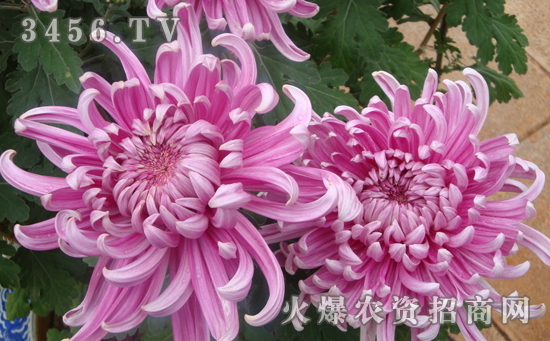
Symptoms: mainly damage to leaves. The leaf initially appears chlorotic macula, the edge boundary is not clear, and then oval or oval yellowish brown disease spot appears on some macula, the edge is dark brown, the boundary is clear. There is a broad yellow halo in the periphery, and a thin mildew layer appears on the spot in the later stage. Prevention and treatment: ① strengthens management and properly removes branches and leaves
2019-03-05 -
How to identify tomato late blight
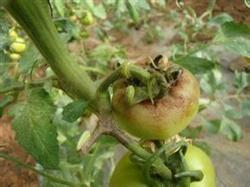
Late blight: the whole growth period and leaves, stems and fruits can be damaged, especially leaves and green fruits. The disease of seedlings generally appeared dark green watery spots from the leaves, and then extended to the stem, showing dark brown rot near the petiole. with the development of the disease, the base of the young stem was waterlogged constricted and the plant wilted and collapsed. The disease in the adult stage starts from.
2018-09-11 -
Control techniques of Brown spot and Black spot of lettuce
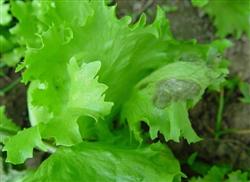
Lettuce brown spot and black spot are considered to be mainly harmful to leaves. The leaf spot of brown spot shows two symptoms: one is water-stained at first, then gradually enlarged into round or irregular shape, brown to dark gray spot, ranging from 2mm to 10mm in diameter. Another kind is dark brown disease spot, the edge is irregular, the periphery has the water stain shape halo. Tide.
2018-09-12 -
Prevention and control of main diseases and insect pests of rhododendron

(1) ① brown spot of rhododendron: it is the main disease of rhododendron. At the beginning of the disease, small brown spots appeared on the leaf surface, and then gradually expanded into large dark brown patches, and many black or grayish brown spots were scattered on the disease spot. The damaged leaves turn yellow and fall off easily, which not only affects the flowering of the same year.
2019-03-03 -
Maple leaves usually turn red in a few months? What month leaves? When will new leaves grow? What are the main ornamental varieties?

Maple blossoms from April to May, leaves fall from September to October, and new leaves generally grow in March of the following year. Autumn, maple leaves gradually turn red or yellow, there are green, purple, for the famous autumn leaf species. Among the many maple trees, it has ornamental value and represents
2020-11-09 maple leaves general month turn red fallen leaves when -
Common symptoms of boron deficiency in vegetables

Common symptoms of boron deficiency in vegetables
2018-06-30
